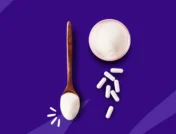Donating blood means giving the gift of life, yet despite the ongoing need for blood donations, only 3 out of every 100 people are blood donors. With patients in the United States requiring blood every two seconds, the nation’s blood banks constantly seek volunteer donors to maintain a readily available blood supply.
Why donate blood?
“A single blood donation can save the lives of up to three people,” says Ross Coyle, spokesperson for the Stanford Blood Center, an independent community blood center in Palo Alto, California. “Blood donations are typically down during the winter and summer months due to weather and vacations, yet the need for blood donations is a year-round issue.”
In addition to helping others, donating blood also benefits donors. Studies show that donating blood can improve heart health by lowering cholesterol and reducing the risk of a heart attack.
What is donated blood used for?
John Cunha, DO, an emergency medicine physician at Holy Cross Hospital in Fort Lauderdale, Florida, says blood donations are critical for many reasons and needed for both emergencies and long-term treatments.
“Donated blood is used for trauma patients such as those injured in natural disasters or mass tragedies, cancer patients who require blood transfusions, and those who lose blood during major surgeries,” Dr. Cunha says. “You never know when you or a loved one might need a blood donation.”
Can I donate blood?
What are the requirements for donating blood?
All blood banks maintain eligibility requirements for potential donors in order to protect both the blood donor and recipient. Coyle says those who are interested in becoming a blood donor should consider the following and advises contacting your local blood bank if you have additional questions:
Age: Blood donors must be at least 17 years old (or 16 in some states with a signed parental consent form). Coyle says there’s no upper age limit to donating blood as long as you’re in good health.
Weight: Blood donors should be in good health and weigh at least 110 pounds. There is no upper weight limit.
What will disqualify you from giving blood?
There aren’t a lot of requirements around who can donate blood, but there are many conditions that can prevent you from donating.
Anemia: Experts say low hemoglobin levels (less than 12.5 g/dL) is the number one reason people are unable to donate blood. If you have a low hemoglobin level, the blood bank may suggest consulting with your healthcare provider on how to raise your levels and then returning in the future to donate blood.
Fear: Some attribute their reluctance to donate blood to anxieties about the process, such as a needle phobia or fear of fainting. Coyle says donating blood is safe. And it only takes about 15 minutes. The majority of donors feel fine afterward and have no side effects.
Pregnancy: Blood cannot be donated during pregnancy or for six weeks after giving birth.
LGBTQ donors: The current FDA policy, with guidelines updated on May 11, 2023, says that all donors, regardless of sexual orientation or gender, can’t donate blood if any of the following are true:
- The donor reports having a new sexual partner in the last three months.
- The donor has had more than one sexual partner in the last three months.
- The donor has had anal sex in the past three months.
This policy replaces the previous guidelines that gay and bisexual men could not donate blood unless sexually abstinent for the past 12 months.
Tattoos and piercings: In most states, if a tattoo or ear/body piercing was done by a licensed facility and professional in your state using sterile needles and non-reused ink, there is no deferral period. In states that don’t regulate tattoo facilities, there may be a deferment period. Check with your local blood bank for more info.
International travel: Coyle says those who have traveled or lived in another country may receive a deferral period based on whether they might have been exposed to an emerging infectious disease. For example, having the Ebola virus makes candidates ineligible to donate blood. Exposure to mosquito-borne illnesses such as dengue or chikungunya may result in a deferment until symptoms resolve.
In addition, people who have traveled or lived in countries where malaria transmission occurs will also receive a deferment of 1-3 years.
Medications: If you’re taking certain prescriptions such as blood thinners, antibiotics, medications for multiple sclerosis and cancer, and other health conditions, you might receive a deferral from a blood bank ranging from a week to several months.
Certain health conditions: Patients currently undergoing cancer treatment, or who had hepatitis/jaundice after the age of 11, a cold or flu within the last two days, or a blood transfusion within the past year are not eligible to donate blood. Individuals with possible exposure to Creutzfeldt-Jakob disease (mad cow disease) are also ineligible. In addition, some forms of heart and lung disease, neurological diseases, Hepatitis B and C, HIV infection (AIDS), or other sexually-transmitted diseases also prevent a person from donating blood.
And, if donating blood is your favorite good deed, be aware of the waiting period. You should wait eight weeks between blood donations.
COVID-19 vaccine:
If you’ve received the COVID-19 vaccine, you can donate blood if you are feeling well. Depending on which brand of vaccine you received, you may need to follow a specific deferral time before donating.
- Donors who have received an inactivated or RNA-based vaccine or booster by AstraZeneca, Janssen/J&J, Moderna, Novavax, or Pfizer do not have to wait to donate.
- Donors who aren’t sure which vaccine or booster they’ve received or who have received a live attenuated COVID-19 vaccine or booster have to wait two weeks before donating.
How do I prepare to donate blood?
To find a blood donation center, blood drive, or mobile blood drive near you—and to schedule an appointment—visit the American Red Cross’s “Find a Drive” page here. Before your blood or plasma donation follow these important steps:
- Get eight hours of sleep the night before your appointment so that you’re well-rested.
- Drink at least 16 ounces of water prior to your appointment time to reduce the risk of dehydration, low blood pressure, and fainting.
- Eat a healthy meal, including foods rich in vitamin C and iron. Avoid fatty foods prior to your donation.
- Bring a photo ID to your appointment.
- Dress in short sleeves or wear long sleeves that can be rolled up easily—comfort is key!
When you arrive at your appointment, you’ll undergo a health check that may take 30-45 minutes. A whole blood donation will take about 15 minutes, but if you’re making a plasma or platelet donation, the process will take longer—about 80-120 minutes. Here’s what to expect during the donation process:
- Registration entails signing in with your ID and reading information about the process.
- To confirm your eligibility, you’ll fill out a donor history questionnaire, including information about recent travel, your overall health, and your lifestyle.
- A health check will be performed to check your blood pressure, temperature, pulse, red blood cell, and/or hemoglobin levels.
- Your arm will be cleaned and sterilized, and you’ll remain comfortably seated for the duration of the donation.
- After your donation is complete, you’ll stay at the donation site for 10-15 minutes, where you’ll be given a drink and snack.
- Avoid strenuous activity for four hours after your donation, and leave your bandage on for a few hours afterward. When you remove it, wash your arm with soap and water.
- You may feel dizzy, lightheaded, or fatigued, and you may experience bleeding, bruising, or pain. If severe symptoms occur, reach out to a healthcare provider.
What happens after blood donation?
Once your blood arrives at a processing center, it is scanned into a computer database. It then undergoes the following preparation process:
- Your donation will most likely be separated into red blood cells, plasma, and platelets by being spun in a centrifuge, with plasma being further processed into smaller components.
- Platelets and red cells undergo a process called leukoreduction in which white blood cells are removed.
- Each of the separate components is packaged into standardized units for transfusions.
Once the units of blood are ready, they are tested for blood type, atypical red blood cell antibodies, and markers of several diseases including:
- Trypanosoma cruzi, a parasite
- Hepatitis B virus (HBV)
- Hepatitis C virus (HCV 3.0)
- Human Immunodeficiency Virus Types 1 and Type 2 (HIV 1,2)
- Human T-Lymphotropic virus (HTLV-1/2)
- Syphilis bacteria (Treponema pallidum)
- Zika virus (ZIKV)
- West Nile virus (WNV)
- Babesia, a parasite
According to the Centers for Disease Control and Prevention (CDC), there is a constant and critical need for blood. If you’re eligible and healthy, consider giving blood. It’s a great way to contribute to your community.











